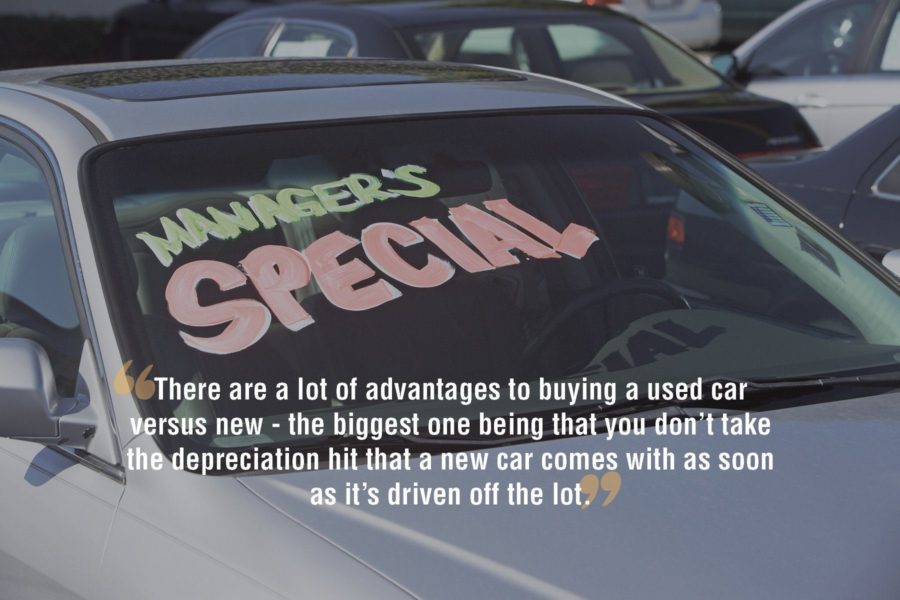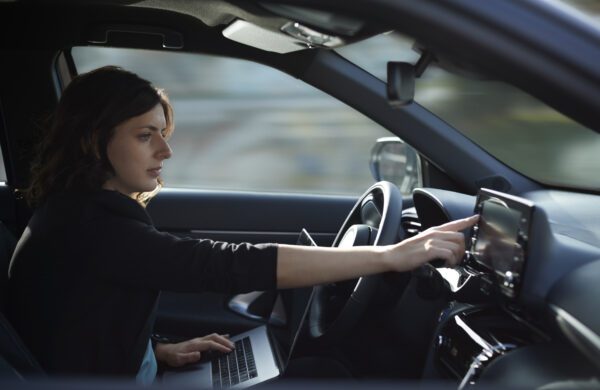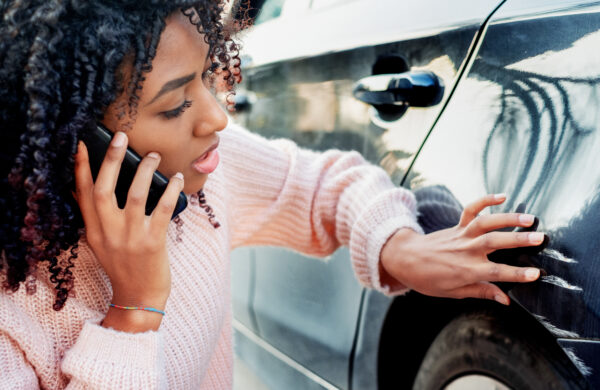So you’ve decided to purchase a used car. Great! There are a lot of advantages to buying a used car versus new; the biggest one being that you don’t take the depreciation hit that a new car comes with as soon as it’s driven off the lot.
According to CarFax, cars lose as much as 10 percent of their value in the first month and as much as 20 percent after the first year. Once you get past that initial drop, depreciation happens more slowly.
Even buying a used car that’s just a year or two old can help you avoid the most depreciation. In addition, you can enjoy lower car insurance premiums, and registration can often be cheaper, too. However, buying a used car without doing your homework can be a recipe for disaster. Here are some important areas to explore before starting your car buying process.
Do Some Preliminary Research
Set a Budget
Used cars come in all shapes, sizes and prices. The last thing you want to do is find the perfect car, only to realize it’s completely unaffordable.
Before buying a car, sit down and figure out how much you’re willing to pay and if you’ll be buying outright or financing. If you’re financing, decide if you can put money down on the car and how long you want the terms of the loan. Your goal here is to determine how much you ultimately want your monthly payments to be.
Determine If You’re Trading In
A trade-in is important to consider when buying a used car, since it will affect your bottom line. If you’re trading in your vehicle, first get an idea of its value.
You can do this by having it evaluated at a dealership, but it’s a good idea to go online and use sites such as the National Automobile Dealers Association. This can give you a ballpark figure that you can keep in mind as a benchmark when you finally visit a dealership.
Dealership or private seller?
Before looking for a car, understand the differences between buying from a dealership versus a private seller. With a private seller, you are likely to buy a car at a lower cost than a dealership since there are no dealer fees that are added to your purchase at a dealership.
However, a private seller can’t offer you a warranty unless there is already an existing one that can be transferred with the car. You’ll also have to set up financing yourself and will not have the option to do it through the dealer.
In addition, check the lemon law in your state. In most states, a car is considered a lemon if it has a “substantial defect” covered by warranty that occurs within a certain time after purchase, and continue to have the defect after a “reasonable number” of repair attempts. What exactly constitutes a substantial defect or a reasonable number of attempts varies by state. In addition, it also varies by state whether lemon laws extend to private sellers.
Know the Difference Between Used and Certified Preowned
Before looking for a used car, it’s important to understand the difference between a used car and a certified preowned (CPO) car. A used car usually only offers the remainder of the factory warranty and only if it’s still in effect and fully transferable.
A CPO car is one that is previously owned, usually with no more than 60,000 to 80,000 miles and no older than five to seven years (the time and mileage warranties vary by manufacturer). CPO cars are backed by the original manufacturer, subjected to a rigorous, multi-point inspection and come with an extended warranty from the original date of service good at any dealer in the country.
Usually only well-maintained, low mileage vehicles are chosen as certified preowned, which means you’re already starting with a better vehicle than you might find through other means. The downside is that a certified model is going to cost more than a comparable non-certified car, even if it is less costly than a new car. Read on to learn the pluses and minuses of buying a certified preowned vehicle.
Start Looking!
Once you’ve assessed your budget and trade-in value, it’s time to start looking for a used car. You may already know what car type you want, but if not, determine what kind of car you want and will work best for your needs, such as a compact, sedan, SUV, minivan, truck, etc.
From there, narrow the search down to the different makes you may want to consider. Compare similar car types across brands and assess features, reliability, safety, etc. There are a number of sites out there with user-friendly car comparison features to make this process easy.
You can drill down this search to the specific model of used car you would prefer or leave this open for when you visit the dealership. An SUV may look like your perfect choice on paper, but once you drive a minivan, you may reevaluate your decision.
And just like you assessed your car’s trade-in value, check the used car book values of the vehicles you’re looking for based on their age, features, mileage and condition. Sites like Cars.com assist potential car buyers in comparing local listings and reviews from dealers and private sellers.
Obtain the Vehicle History Report (VHR)
Running a Vehicle History Report, otherwise known as a VHR or vehicle identification number (VIN) check, can give you a lot of information about that car’s history.
A VHR shows how many people have owned the vehicle, whether it’s been in an accident and plenty of other vital information. You should be able to obtain a vehicle history whether you’re buying from a dealership or a private party. Otherwise, you can obtain one through the car’s vehicle identification number, which can usually be found on a small plate attached to the driver’s side of the front windshield, visible from the outside of the car looking in.
The VIN is a combination of 17 numerals and letters unless the vehicle was manufactured before 1981. Vehicles made before 1981 may have a shorter VIN, but they are usually located in the same place on the dashboard.
You can then take the VIN to a government-sponsored VIN check service, such as the National Insurance Crime Bureau (NICB) or the National Motor Vehicle Title Information System (NMVTIS), or to a third-party, private VHR provider.
VHRs can be obtained online through sites like CarFax and AutoCheck, which supply history reports on used cars to individuals and businesses.
Questions a VHR should answer include:
- How many owners has the vehicle had? Multiple owners isn’t necessarily a bad thing, but it can also make it harder to assess how well the car was taken care of and the issues it may have had.
- In what locations has the vehicle been? Weather conditions in various areas of the country can affect the condition of a car.
- Has the vehicle been in any accidents? Fender-benders may be one thing, but a major accident can be a red flag that the car may have sustained significant internal and external damage.
- Has the vehicle had any recall notices or repairs?
- Does it have service or maintenance records? Not all cars may have them, but vehicles with a documented routine maintenance history can give you some peace of mind that the car has been taken care of.
- Mileage: While you won’t know if the miles are mostly local or highway, mileage should be factored into your decision, especially if the vehicle has had multiple owners, multiple locations and a history of accidents. An older, low mileage car may have been stored for a period of time or only driven on certain occasions.
Assess the Used Car
Whether you’ve narrowed your selection down to one or are still keeping your options open, test driving is the best way to find out if a particular used car is right for you. But before you do that, it’s important to assess the condition of the car inside and out as best you can.
Here is a checklist of what to look for before, during and even after the test drive to ensure the car’s condition is up to par.
Overall Exterior Appearance and Condition
- Look for dents, scratches and rust on the outer body, wheel wells and door bottoms.
- Check for missing parts or misaligned panels or gaps that could indicate a bad repair job.
- Look at all seals for signs of wear and tear.
- Assess the paint to determine if there have been touchups or an entire repaint.
- Open and close all doors, hood and trunk to check for resistance, noises or poor closures.
- Check all the car glass for signs of cracks or chips.
- Confirm that all lights and reflectors are working properly and not fogged or cracked.
- Bounce the corners of the car up and down to ensure the shock absorbers are in good shape.
- Tug on the top tires and check for clunking sounds, which would indicate faulty wheel bearings or suspension joints.
- Check on the condition of the tires and whether they are original or newer. Assess the tread wear to see if it’s worn evenly; tires must have at least 1/16 inch of tread to be legal. Insert a penny into the tread groove with Lincoln’s head facing down. If you can see the top of his head, the tires need replacing. Finally, if there is a spare tire, ensure it is in good shape and that a jack and lug wrench are included.
- If the car has been parked in that location for a while, check to see if there are any puddles of gasoline, oil, coolant or transmission fluid on the ground underneath it.
- Check the mileage and make sure it correlates with the mileage stated on the VHR. If you suspect the odometer has been rolled back, take it to a mechanic, who can usually determine if mileage is correct by inspecting the condition of various parts of the car.
Overall Interior Appearance, Comfort and Functionality
- Check the condition of the upholstery and roof material for rips, stains, burns and overall wear and tear.
- Assess any scratches or damage to the interior door panels and console.
- Ensure the rubber on the pedals, brake and clutch isn’t worn through.
- Smell the interior and note any mildew odors that could indicate water damage or evidence that a smoker used the vehicle.
- Determine how easy it is to get in and out of the car based on your height and physical condition. What about kids hopping in the back seat or dogs jumping in the cargo area?
- Check to see if there is enough head, hip and legroom in the front and back seat and if you can adjust the seats to your liking.
- Look at the dashboard and controls to see if they are easy to read and intuitive.
- Ensure you have good range of sight in the front, back and sides. Are there significant blind spots? Is any part of the car blocking your vision? Are there backup cameras?
- Turn on the car to ensure all features work such as air conditioning, heating, turn signals, headlights and brights, emergency flashers, cruise control and horn.
Technology
- Ensure the radio works and, if you want to use electronic devices in the car, that it has the proper USB ports.
- Assess other technology in the car: Does the car have Bluetooth capabilities? What about smartphone apps Apple CarPlay and Android Auto? A navigation system? Infotainment screens? Lane departure warning systems? Blind spot detection? It’s important to not only determine how these work and if they are intuitive enough for you, but if the various technologies are ones you want and/or need in your next car.
Under the Hood
While you can do an overall basic assessment of the car, it’s recommended that before buying a used car, you take it to a mechanic for an inspection of the areas under the hood and structural elements under the car such as:
- Fluids
- Brakes
- Electrical system
- Cooling system
- Suspension
- Engine/exhaust
- Air conditioning and heating
- Tires
- Body condition/rust
Here are some areas you may be able to check on your own:
- Hoses and belts should be firm and not cracked or frayed.
- Fluid levels and color should be checked. Engine oil should be dark brown or black; transmission fluid pinkish; radiator coolant greenish or orange with no stains on the outside of the reservoir.
- If the battery has a charge indicator, make sure it’s in the green versus yellow or black. A mechanic can check the charging system by doing a load test on the battery.
- Check for rust or grease in the tailpipe, which might indicate the car is burning oil or that a new exhaust system is needed.
Test Drive the Used Car
First of all, test drive the used car in the manner in which you will be using it.
If you will be primarily driving around town, drive the car in the city and assess stopping and starting, turning capabilities and how it performs in traffic. If you’ll be doing lots of highway driving, take it out on the freeway. If you’ll be using it in the mountains, assess its climbing capabilities.
Then, Edmunds recommends assessing the following:
- Acceleration: Does the car downshift quickly and smoothly? Is there enough power to pass on the highway or to go up hills?
- Engine and road noise: How does the car sound when you strongly accelerate? Is there a lot of noise from the tires? Is the cabin quiet?
- Braking: How does the pedal feel? Do the brakes “grab” suddenly?
- Steering and handling: Is the car responsive? Can you feel the road through the steering wheel?
- Suspension: Is it stiff or soft? Does the car ride comfortably on a rough road?
After the Test Drive
It’s easy to get caught up in the excitement of buying a used car. Take a moment to pause and assess the checklist of your needs as compared to what the car offers, how it looks and performs and your budget. Ask as many questions of your sales associate or seller as you can think of. Test drive a few used cars so you have some comparisons, which will also give you a stronger bargaining position.
Some experts recommend walking away and sleeping on it so you can make a final decision with a clear head. Regardless, before buying a used vehicle, ensure you’ve done your homework and assessed all the aspects of the used car before making that purchase.
Whether you’re buying used or new, Higginbotham can help you secure the car insurance coverage you need. Talk to an auto insurance specialist today.





